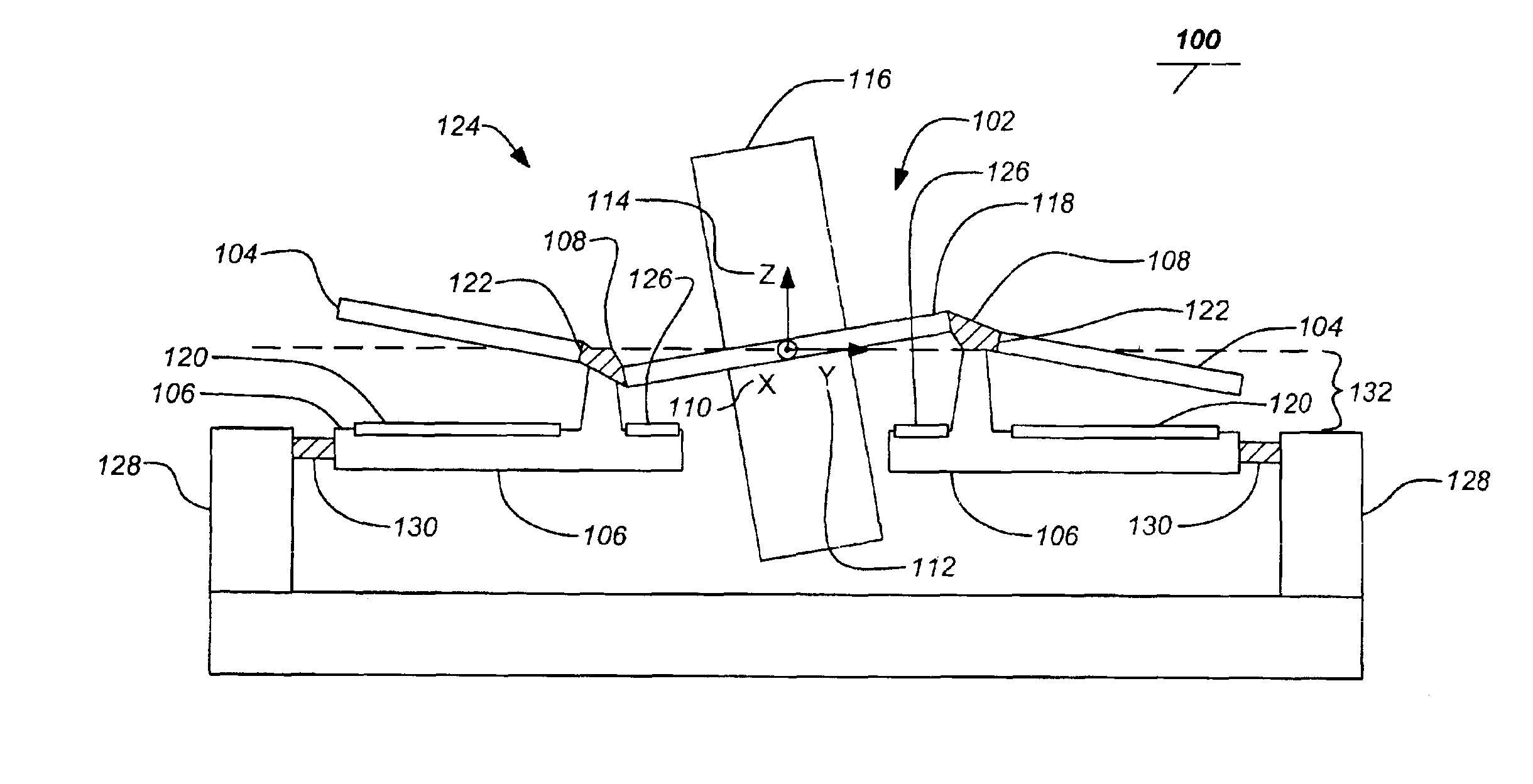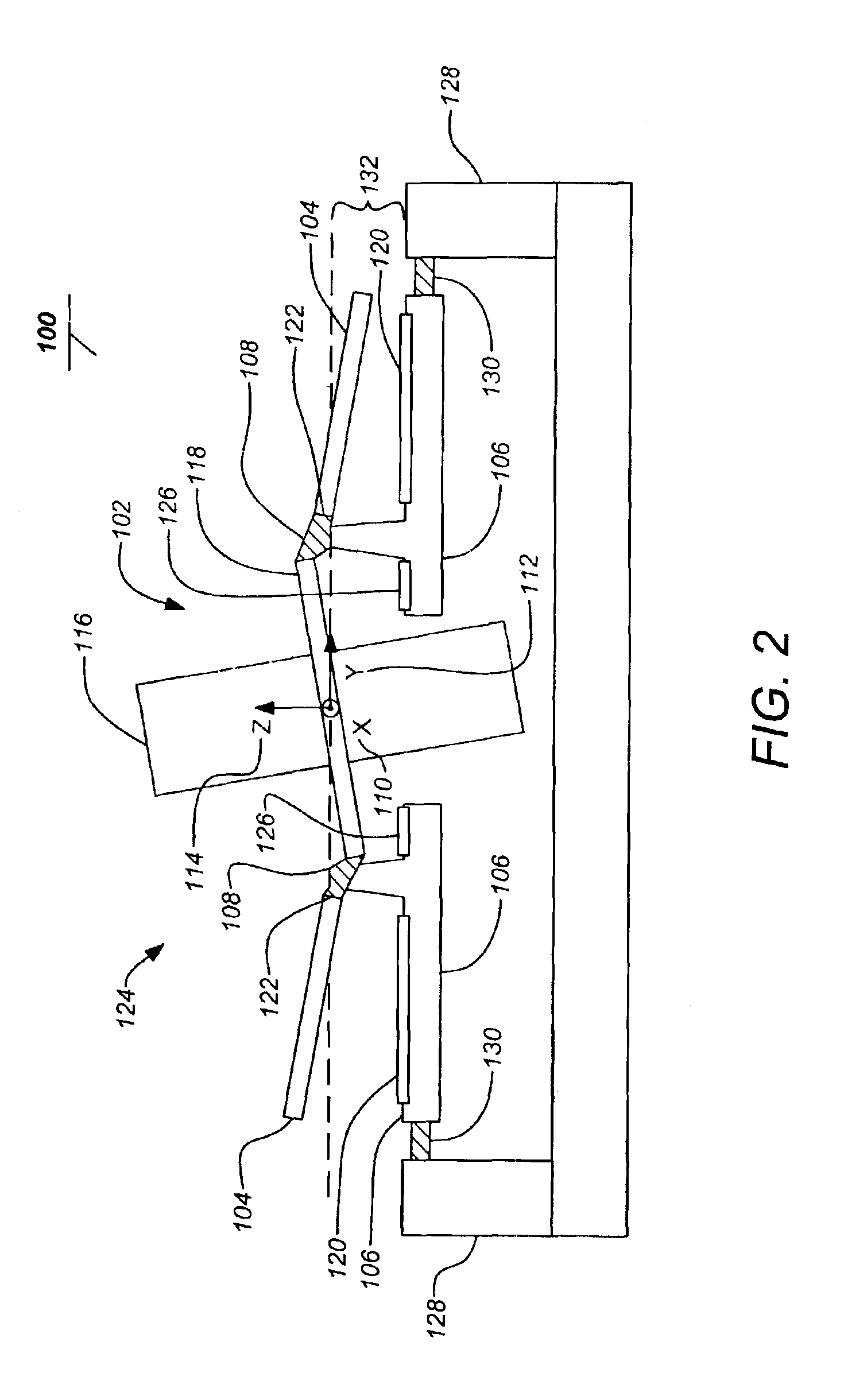Isolated resonator gyroscope with isolation trimming using a secondary element
a secondary element and gyroscope technology, applied in the field of gyroscopes, can solve the problems of large and heavy, large and heavy, and the mechanism of older conventional gyroscopes is very heavy, and achieves the effect of low total thickness variation
- Summary
- Abstract
- Description
- Claims
- Application Information
AI Technical Summary
Benefits of technology
Problems solved by technology
Method used
Image
Examples
Embodiment Construction
[0038]In the following description, reference is made to the accompanying drawings which form a part hereof, and which is shown, by way of illustration, several embodiments of the present invention. It is understood that other embodiments may be utilized and structural changes may be made without departing from the scope of the present invention.
1.0 Overview
[0039]Embodiments of the present invention generally describe a systematically designed isolated planar vibratory gyroscope that provides a desired differential rocking mode vibration of a counterbalancing plate versus a central elongated proof mass, while ensuring that the undesirable common rocking mode frequency is practically separated above the desirable differential mode frequency. Embodiments of the invention include isolation that can be simply achieved by adjusting the elongated proof mass (i.e., post) length. The inertias of the proof mass and counterbalancing plate do not have to be as precisely equal.
[0040]Further emb...
PUM
| Property | Measurement | Unit |
|---|---|---|
| length | aaaaa | aaaaa |
| momentum | aaaaa | aaaaa |
| proof mass | aaaaa | aaaaa |
Abstract
Description
Claims
Application Information
 Login to View More
Login to View More - R&D
- Intellectual Property
- Life Sciences
- Materials
- Tech Scout
- Unparalleled Data Quality
- Higher Quality Content
- 60% Fewer Hallucinations
Browse by: Latest US Patents, China's latest patents, Technical Efficacy Thesaurus, Application Domain, Technology Topic, Popular Technical Reports.
© 2025 PatSnap. All rights reserved.Legal|Privacy policy|Modern Slavery Act Transparency Statement|Sitemap|About US| Contact US: help@patsnap.com



